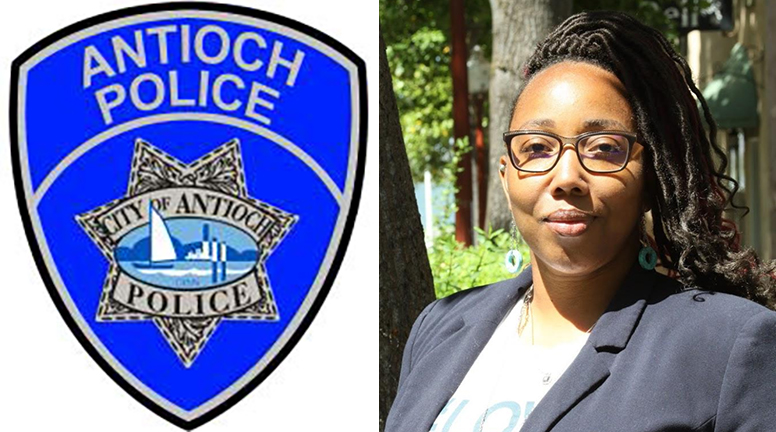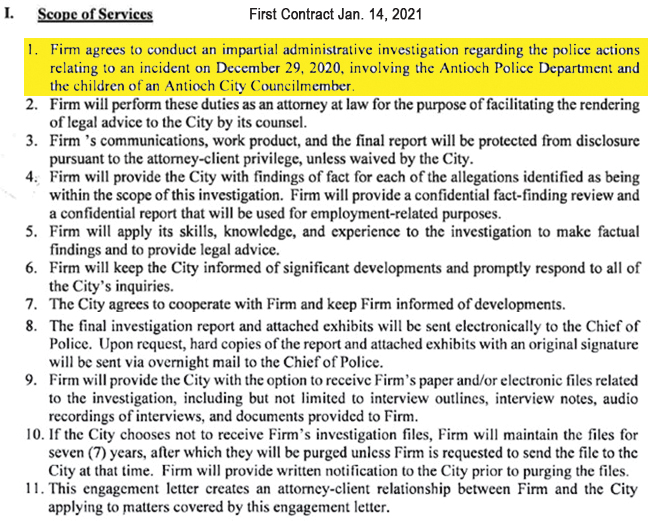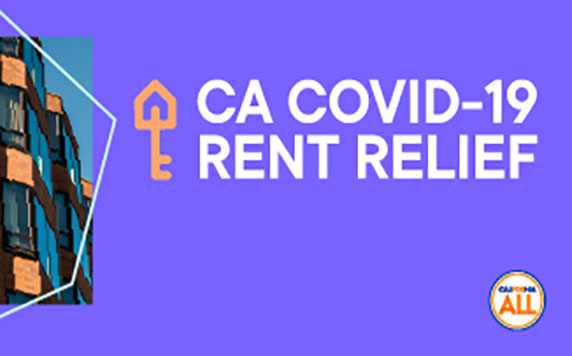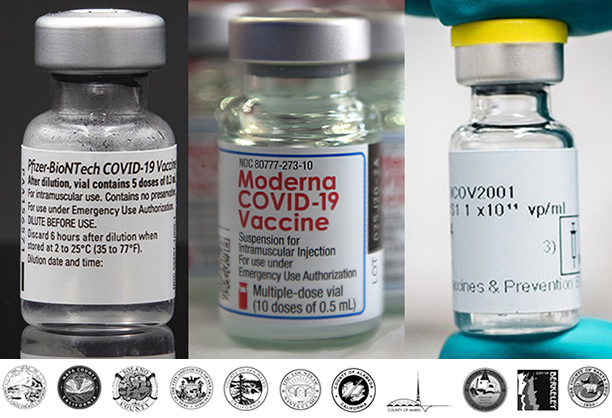
An investigation by a law firm into a Dec. 29 police incident involving Councilwoman Tamisha Torres-Walker’s sons was expanded to allow inclusion of her conduct and comments toward the officers.
Second contract signed by city manager a month later similar to first but expands scope; city attorney claims he was unaware of it; city agreed to pay lead investigator $420 per hour, plus $180/hour for writer/editor’s time, $120/hour for intern’s time and other costs; no information on when or if the investigation has been concluded
By Allen Payton
On Friday, March 12, 2021, in response to a public records request by the Herald, Antioch City Attorney Thomas Smith released contracts with the outside investigator hired to investigate both the police officers’ incident with District 1 Councilwoman Tamisha Torres-Walker’s sons on Dec. 29. She demanded an outside investigation be conducted. According to Smith, the second contract revised the scope of work included in the first. That allowed inclusion of the councilwoman’s conduct at the scene and comments in a later online video about it. (See related article)
First Contract Signed by Police Chief, City Attorney
As Antioch Police Chief T Brooks had shared previously, he hired the investigation firm, Oppenheimer Investigations Group, LLP (pronounced aw pin high mir), to investigate the conduct of his officers in the Dec. 29 incident. That was when they stopped Torres-Walker’s 13-year-old son who was riding a four-wheeled ATV “quad” motorbike and pursued her 20-year-old son who was riding a dirt bike but fled from the scene, both on city streets. According to a letter from an attorney for the Antioch Police Officers’ Association (APOA), Mike Rains, “the officers witnessed the subjects riding these vehicles in violation of several CVC sections, including riding on the wrong side of the road (CVC § 21650) and riding a motorcycle (the rider of the dirt bike) without a helmet (CVC § 27803).” (See related article)
The stop occurred on A Street in front of a home in the 1900 block near the intersection of Walter Way. As previously reported by this writer, who drove by the scene of the stop, both the police car and quad were facing south in the right, north bound lane.
Also, according to Rains’ letter, “Unbeknownst to the officers on scene, the second rider who fled was Ms. Torres-Walker’s adult son, who apparently fled to his home where he notified Ms. Torres-Walker about the incident and the officers’ contact with her other son.”
“Although the 13-year-old was wearing a helmet, the ATV was not street legal (CVC §§ 38010, 38012) and he did not possess a valid California Driver License (violation of CVC § 12500(a)). Due to his age and the fact that the ATV would be towed, as well concerns about the second rider who fled, officers asked the 13-year-old to contact a parent who could respond to the scene and pick him up. This was done to ensure a parent, in this case Ms. Torres-Walker, was aware of the incident and to ensure the officers knew the minor would be released to a responsible adult.
A short-time later, Ms. Torres-Walker, along with her adult son, arrived in another vehicle to the location where officers stopped her 13-year-old son. Ms. Torres-Walker immediately approached Officer Prieto and Officer Rodriguez in a hostile and threatening manner as she announced her position as a City Council member and made statements to the effect of ‘do you know who I am?,’ ‘I’ll have your badge,’ and ‘I’ll have your [expletive] job, do you know who I am?’ Eventually, Ms. Torres-Walker calmed down enough for the officers to complete the paperwork to tow the ATV and issue a citation to her son. The 13-year-old son was released to Ms. Torres-Walker at the scene without further incident.”
In both Rains’ letter and a second video posted on her council Facebook page on Feb. 16, Torres-Walker said she met with Vida Thomas, a partner in Oppenheimer, and informed the councilwoman of both the investigation into the police incident with her sons, as well as her conduct and comments to and about them.

First Contract Signed Jan. 14 Focused on Police Actions
The first contract was signed by both Brooks and Smith on Jan. 14, 2021 with Amy Oppenheimer, the firm’s managing partner. It reads, “Firm agrees to conduct an impartial administrative investigation regarding police actions relating to an incident on December 29, 2020, involving Antioch Police Department and the children of an Antioch City Councilmember.” 2021.01.14 Oppenhemier Agreement
The investigators are lawyers, so the contract established an attorney-client relationship and states the “Firm’s communications, work product and final report are protected from disclosure…unless waived by the City”. The contract included payment of $420 per hour for the lead investigator, $180 per hour for an editor/writer and $120 per hour for an intern’s time, as well as other related costs of the investigation.

Second Contract Signed by City Manager, Police Chief Removes Language Focused on Police Actions
Prior to release of the contracts, attempts to reach Ms. Thomas to confirm if she was hired and by whom for the second contract were unsuccessful. But the second contract, dated Feb. 15, 2021 shows Antioch City Manager Ron Bernal’s name and signature, as well as Chief Brooks’ name and signature. It does not include Smith’s signature, nor anyone from the APOA, as Torres-Walker stated in her Feb. 16th video. 2021.02.15 Oppenhemier Agreement
“My signature is not on the second contract, which revised the scope of the investigation, because I was not notified of this contract,” City Attorney Smith shared.
However, the second contract is similar to the first, with the exception of who signed it. In addition, the second contract reads: “Firm agrees to conduct an impartial administrative investigation regarding an incident on December 29, 2020, involving Antioch Police Department and the children of an Antioch City Councilmember,” and no longer included the words “police actions relating to.”
It did not ask for a separate investigation into Ms. Torres-Walker, but the removal of the language included in the first contract is what allowed the investigation to be expanded to include her conduct and comments.
Furthermore, in her second video she stated, “On Wed., Feb. 10 at 11:00 a.m., I actually met with Vida Thomas, who is with Oppenheimer Investigations Group. They are handling the independent investigation into the situation that happened with my sons and Antioch PD.” Torres-Walker also said, “through the…interview process of the investigation, the attorney, Vida also alerted me that she is also representing the Antioch Police Officers’ Association in their request for independent investigation into my conduct.”
Only One Investigation Not Two
There was only one investigation, not two, into the incident, with the second contract expanding the scope of work from the first, which included the councilwoman’s conduct and comments. Thus, the reason for the same investigator working on both aspects of the investigation.
Questions to Staff, Torres-Walker and Other Council Members
The following questions were emailed to Bernal, Brooks, and Torres-Walker and included City Attorney Smith and the other four council members:
“How did the second contract revise and expand the scope of services outlined in the first one? Was the elimination of the words “police actions relating to” in the second contract the difference which revised and expanded the scope of work of the investigation to include Councilwoman Torres-Walker’s conduct and comments?
If so, then there was only one investigation, not two. Correct? And if that’s the case, has the investigation of all parties involved in the incident been concluded or terminated, when and by whom, and why?
Was there a cover letter for the second contract asking for a broader investigation into the councilwoman’s conduct and comments? Or was there other communication between Ron and Ms. Oppenheimer prior to the signing of the second contract?
Furthermore, since Ms. Torres-Walker stated in her Facebook video on Feb. 16 that, ‘On Wed., Feb. 10 at 11:00 a.m., I actually met with Vida Thomas, who is with Oppenheimer Investigations Group.’ and ‘through the…interview process of the investigation, the attorney, Vida also alerted me that she is also representing the Antioch Police Officers’ Association in their request for independent investigation into my conduct.’
First, to Councilwoman Torres-Walker, when did Ms. Thomas alert you to the second investigation? Was it on Feb. 10 or on Feb. 15 or 16, after the second contract was signed and prior to your video in which you mentioned it?
Second, to Ron and T (Chief Brooks), if she was alerted on Feb. 10, how would Vida Thomas know there was a second investigation before the contract was signed with Ms. Oppenheimer on Feb. 15 unless there were other communications between Ron and/or T, and Ms. Oppenheimer prior to signing the contract? If there were additional communications. Please confirm that fact and what was communicated to Ms. Oppenheimer as to what would be included in the additional scope of work, and provide that information/documentation, as well.”
They were also asked if the investigation has been concluded. If so or if not, when? If not, when will it be? Also, how much has the City been billed to date, for the investigation.
A formal records request was made on Saturday, March 13 for that additional communication if the city officials are unwilling to provide it and answer the questions.
In addition, another public records request was submitted the same day for the City to waive their attorney-client privilege and release any and all reports from Oppenheimer to the City of Antioch as described in the contracts. The City has 10 days to provide that information.
As of Monday, March 15 at 12:45 p.m. no responses to the questions were received from any city official.
Please check back later for any updates to this report.
 On Thursday, March 11, 2021, at approximately 4:58 PM officers from Richmond Police Station responded to an attempted carjacking that just occurred at ‘Safeway’ on the 700 block of 7th Avenue. Officers arrived on scene and met with the 75-year-old female victim who was suffering from injuries sustained during the incident. Officers summoned medics who treated the victim for non-life-threatening injuries.
On Thursday, March 11, 2021, at approximately 4:58 PM officers from Richmond Police Station responded to an attempted carjacking that just occurred at ‘Safeway’ on the 700 block of 7th Avenue. Officers arrived on scene and met with the 75-year-old female victim who was suffering from injuries sustained during the incident. Officers summoned medics who treated the victim for non-life-threatening injuries.








 Laboratory results have revealed the first two known cases of the highly infectious U.K. variant (B.1.117) in Contra Costa County. The B.1.117 variant, dubbed the U.K. variant because it is believed to have originated in the United Kingdom, is more contagious than others and possibly more deadly.
Laboratory results have revealed the first two known cases of the highly infectious U.K. variant (B.1.117) in Contra Costa County. The B.1.117 variant, dubbed the U.K. variant because it is believed to have originated in the United Kingdom, is more contagious than others and possibly more deadly.





 Leaving California or is it time to reinvest in a different property or state? Due to the recent upswing in homes values we have realized a significant growth in equity. Many owners think that they may be stuck in their current investment property. Whether you bought it as an investment, or it was an owner occupied that went past your three-year deferment period you have options. Maybe you would prefer an investment in a different city, region or even another state. Possibly you would like to combine many properties into few or few into many. The answer is a 1031 Tax Exchanges otherwise known as a Starker Exchange. This process allows real estate owners to defer taxes on capital gains resulting from the sale of investment real estate, often a sizable sum since combined Federal and State taxes can run as high as 38 percent.
Leaving California or is it time to reinvest in a different property or state? Due to the recent upswing in homes values we have realized a significant growth in equity. Many owners think that they may be stuck in their current investment property. Whether you bought it as an investment, or it was an owner occupied that went past your three-year deferment period you have options. Maybe you would prefer an investment in a different city, region or even another state. Possibly you would like to combine many properties into few or few into many. The answer is a 1031 Tax Exchanges otherwise known as a Starker Exchange. This process allows real estate owners to defer taxes on capital gains resulting from the sale of investment real estate, often a sizable sum since combined Federal and State taxes can run as high as 38 percent.










